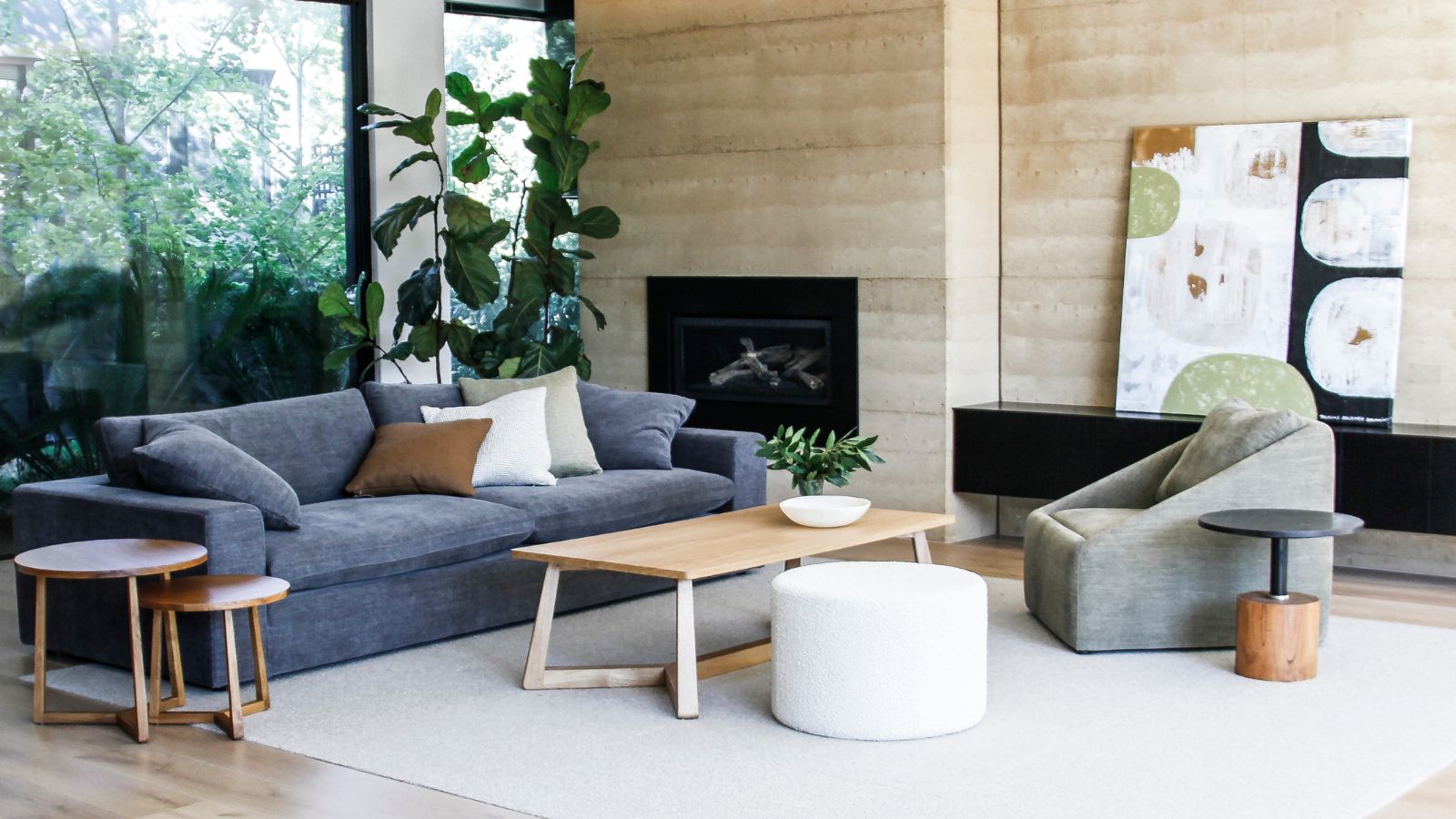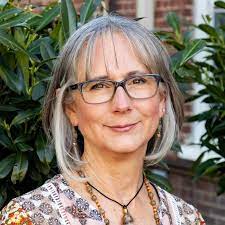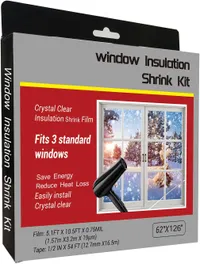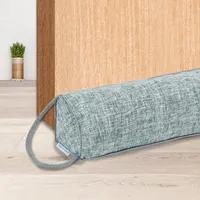How to keep a poorly insulated house warm – 6 contractor tips to keep cozy
Keep your bills low even in an uninsulated home with these expert tips


Poor insulation is the enemy of energy bills in the winter. Hard to heat and difficult to keep warm, poorly insulated properties can feel like an uphill battle.
Luckily, there are a few ways to keep even the worst of uninsulated houses warm without turning up the heat, helping to save you a little on your energy bills.
From draft proofing tips to energy audits, this is what professional contractors and heating experts suggest.
How to keep a poorly insulated house warm
Of course, it is important to temper your expectations when saving money in a poorly insulated home in winter. Due to inevitable heat loss, it is difficult to keep warm without using more energy than a house with both attic and cavity wall insulation.
Nevertheless, these tips can help make your heating more efficient to help cut energy bills, even if only a little.

1. Use window film to cheaply insulate glass
A surprising amount of heat is lost through glass, making windows a common offender for making houses feel cold in winter. Docia Boylen, contractor and owner of Handyman Connection of Golden, likes to use affordable window film to add an extra layer of insulation to a property without causing damage:
‘My favorite low-cost solution is a window wrap – clear plastic sheets that stop cold air from entering through unseen gaps in your window and frame. You can purchase a kit at any local hardware or home improvement store.’
Design expertise in your inbox – from inspiring decorating ideas and beautiful celebrity homes to practical gardening advice and shopping round-ups.
All you have to do is measure and apply with a hair dryer to ensure a tight seal, being sure to double up with thermal curtains too for extra protection. This approach comes with the added benefit of helping to stop condensation on windows overnight, too, to help combat moisture and mold.
Window Insulating Film | View at Amazon
This insulating film can be applied to the inside of your windows to add a second or third layer of insulation against cold air without damaging your home.

Docia loves helping homeowners, which is why she started Handyman Connection. Together, with her husband, they have over 60 years of experience in construction and business management.
2. Seal off drafts around your home
Cold drafts are a common occurrence in poorly insulated homes, making the space feel even colder than it already is. Jay Sanders, contractor and owner of Castle Dream Construction, recommends fashioning draft excluders around our doors and windows to help keep cold air out and warm air in. This can be done with traditional draft excluders, weather stripping, or even a slightly damp towel placed along the base of a door in a pinch – especially when draft-proofing an entryway where cold air is most likely to get in.
Remember to also draft-proof a fireplace if it is not in use as cold air can come in down the flue.
Weighted Draft Excluder | View at Amazon
This weighted wedge draft excluder is perfect for stopping drafts beneath both internal and external doors. Pair with some weather stripping for the ultimate block against cold air.
3. Use heaters strategically
Portable heaters may not be the most efficient home heating type, but they are great at bolstering central heating in cold, uninsulated homes, says Shlomo Cherniak, professional handyman and owner of Cherniak Home Services:
‘Portable space heaters can provide localized heat in specific areas to help your central heating along, or to heat specific spots to avoid heating the whole house all of the time,’ he says.
‘Remember to always follow safety guidelines and manufacturer instructions when using space heaters to avoid a health or fire hazard,’ he adds.

Shlomo Cherniak is a handyman and founder of Cherinak Home Services in Baltimore. He has over seven years of experience in home improvement, with him and his team specializing in everything from installing kitchen cabinets to fixing leaky faucets to hanging pictures on the wall.
4. Schedule a home audit
A common home heating mistake is battling against cold spots without understanding what is causing them.
Carol J Alexander, home renovation expert and writer at Fixr, suggests scheduling an energy audit from your energy supplier to help find problem areas and find the most effective solutions: ‘Many power companies offer online energy audits for free. An energy audit reveals areas where the property owner may improve the home's energy efficiency,’ she explains.
‘Some states offer federally and locally funded programs that assist disabled, elderly, and low-income residents in improving their homes' energy efficiency through weatherization methods. Renters may also apply. Residents can search online for the state and weatherization program to find one for their area.’

Carol J Alexander has over five years of experience as a home improvement writer. In her spare time, Carol enjoys DIYing her own home projects, pursuing other crafty hobbies, or spending time with her family.
5. Reverse ceiling fans
While it may not keep your home warm all day, reversing ceiling fans is a common trick used to help recirculate hot air down towards where you are sitting to help the heat last longer, even in a poorly insulated house, reveals Docia Boylen, contractor.
‘You want to run your fans clockwise at a low speed to circulate warm air throughout your home,’ she explains.
6. Use soft furnishings to feel warmer
Whether you are trying to keep a living room warm without heating or keep an entryway warm without heating, soft furnishings can help to make the space look warmer and add a little bit of insulation.
Handyman Shlomo Cherniak recommends using rugs and carpets to help prevent heat loss through hard floors and make it more comfortable to walk around. Similarly, thermal curtains can help prevent heat loss through windows, doors, and some parts of your walls when hung strategically.
Of course, when sitting on your sofa or in bed, a thermal throw will go a long way to keeping you comfortable too, he adds.
FAQs
Why is my house not heating up to the temperature?
If your house is cold and not heating up to the temperature programmed on your thermostat, it could be down to a furnace or thermostat fault, or a lack of insulation in your property. Having an energy audit and a furnace service will help to spot and eliminate issues and help to make your home more energy efficient.
How cold is too cold for a house?
A house is often deemed too cold when it is cooler than 64 Fahrenheit for prolonged periods, especially in main living areas such as the living room or bedroom. Temperatures below this can affect your health, particularly if you are elderly or have compromised health already, making heating your home regularly in winter essential.
When dealing with a poorly insulated home in winter, it is important to still try to heat it, even if it proves expensive and your house still feels cold with heating. Not heating a property can result in structural issues such as mold and damaged pipes, and health issues. Running the heating just a little every day is essential to keeping safe.

Chiana has been at Homes & Gardens for two years and is our resident 'queen' of non-toxic living. She spends most of her time producing content for the Solved section of the website, helping readers get the most out of their homes through clever decluttering, cleaning, and tidying tips. She was named one of Fixr's top home improvement journalists in 2024.


